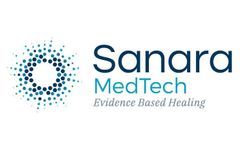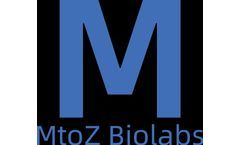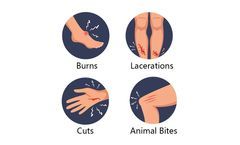Refine by
Wound Management Articles & Analysis
103 articles found
In surgical tissue recovery, focus is on controlling infection, managing inflammation, and ensuring wound closure. Beneath the surface—anatomically and biologically— the extracellular matrix (ECM) is undergoing remodeling ensure long-term tissue integrity. ...
Chemokines are a specialized subset of small cytokines that play a crucial role in the immune system by directing the movement of circulating leukocytes to sites of inflammation, infection, and injury. Acting as chemoattractant molecules, chemokines are central to both innate and adaptive immunity, influencing not only immune surveillance but also wound healing and angiogenesis. Over the past few ...
Platelets take part in hemostasis and wound healing and they also contribute to immune inflammatory responses as well as tumorigenesis and metastasis besides the development of cardiovascular diseases. ...
Introduction to Bioglass Bioglass, also known as bioactive glass, is a type of synthetic material that has revolutionized the fields of medicine and dentistry. First developed in the late 1960s by Dr. Larry Hench and his team at the University of Florida, Bioglass is a glass-ceramic material that has the unique ability to bond with living tissue. This property, known as bioactivity, makes it an ...
ByMatexcel
Human dermal fibroblasts-neonate (HDF-n) are specialized cells derived from the dermis layer of neonatal human skin. These fibroblasts play a crucial role in skin structure, function, and repair. They are pivotal in the study of dermatological conditions, regenerative medicine, and tissue engineering. Role and Functionality Fibroblasts are the primary cells responsible for synthesizing ...
Cytokines and growth factors are essential signaling molecules that play pivotal roles in immune regulation, inflammation, tissue repair, and numerous physiological and pathological processes. To comprehensively study these molecules, scientists often rely on high-throughput and sensitive technologies, among which Luminex Cytokine Panels have become a gold standard. This article delves into the ...
Human mesenchymal stem cells (hMSCs) are a remarkable type of stem cell found in various tissues, such as bone marrow, adipose tissue, and umbilical cord. These cells have garnered significant attention in the field of regenerative medicine and therapeutic research due to their unique properties and potential applications. Characteristics of hMSCs hMSCs possess the ability to differentiate into ...
Hip fractures are common, especially in older adults, and require timely medical and surgical intervention. These injuries can significantly impact a patient’s mobility, quality of life, and overall health. Hip fractures are a medical emergency, and delayed treatment can lead to severe consequences. Elderly patients are particularly vulnerable to complications from prolonged immobility, ...
This ability is particularly beneficial in transplant medicine, where Wharton’s jelly cells could help prevent rejection by the recipient’s immune system. Wound Healing: Studies suggest that the application of Wharton’s jelly in chronic wounds can promote healing and tissue regeneration. The growth factors and cytokines present in ...
HCEC-12 is a well-established human corneal epithelial cell line derived from human corneal tissue. It plays a crucial role in ocular research, particularly for studies related to corneal physiology, wound healing, and the pathogenesis of various ocular diseases. This article delves into the characteristics, applications, and significance of the HCEC-12 cell line in biological and medical ...
Elastase is a powerful enzyme that plays a critical role in various biological processes, both in physiological and pathological contexts. It belongs to the family of serine proteases, which are enzymes characterized by a unique serine residue in their active site. This enzyme is known for its ability to degrade elastin, a key protein that provides elasticity and resilience to tissues such as ...
Recombinant Type III Collagen is a type of collagen protein produced through biotechnological methods. In nature, collagen is a vital structural protein, widely present in the skin, bones, tendons, and other connective tissues of humans and animals. Type III collagen is particularly common in newly formed connective tissues and rapidly growing tissues, such as during the wound healing process.The ...
Structure of Matrix Metalloproteinase (MMP) Family In vertebrates, the MMP family consists of 28 members, at least 23 of which are expressed in human tissues, 14 of which are expressed in the vascular system. MMPs are usually classified into collagenases, gelatinases, stromelysins, matrilysins, membrane-type (MT)-MMPs, and other MMPs based on their substrates and the organization of their ...
Consequently, prolidase deficiency has been linked to various medical conditions, including skin disorders, chronic wounds, and certain genetic disorders. In the pharmaceutical and nutraceutical sectors, Native Porcine Prolidase is used as a dietary supplement to support skin health, wound healing, and collagen synthesis. ...
The versatility of keratinase has led to its widespread adoption in various industries, each leveraging its unique capabilities to solve specific challenges. In the field of waste management, keratinase plays a crucial role in the management of keratin-rich waste, such as feathers, hair, and hooves, by breaking down these materials and reducing their ...
If we were to delve into the intricate world of biochemistry, we would come across the functionality of diverse molecules that perform essential roles in biological systems. One such class of molecules, peptides, are short chains of amino acid monomers linked by peptide bonds. These aren't just any ordinary molecules; these are functional peptides which undeniably contribute a significant part to ...
Electrospinning can produce continuous fibers on the micro - and nano-scale. The high flexibility and low cost of the material make electrospinning very attractive. In addition, the high specific surface area, porosity, and similarity to ECM ensure that the electrostatic pad promotes cell adhesion, skin regeneration, nutrient and oxygen transport, moisture retention, exudate removal, and ...
Collagen is the main structural protein in vertebrates. It plays an essential role in providing a scaffold for cellular support and thereby affecting cell attachment, migration, proliferation, differentiation, and survival. Natural animal collagen and its recombinant collagen are favorable replacements in human tissue engineering due to their remarkable biomedical property. However, this ...
Wound care is important, especially for the elderly. Giving them only love and care is far from enough, but you also need to learn how to effectively manage different types of wounds. ...
This article offersexpert-approved advice to help you manage different types of wounds properly. We'll also cover the do's and don'ts of integrated wound care, so you can make sure those wounds get the right attention and heal up faster. ...












